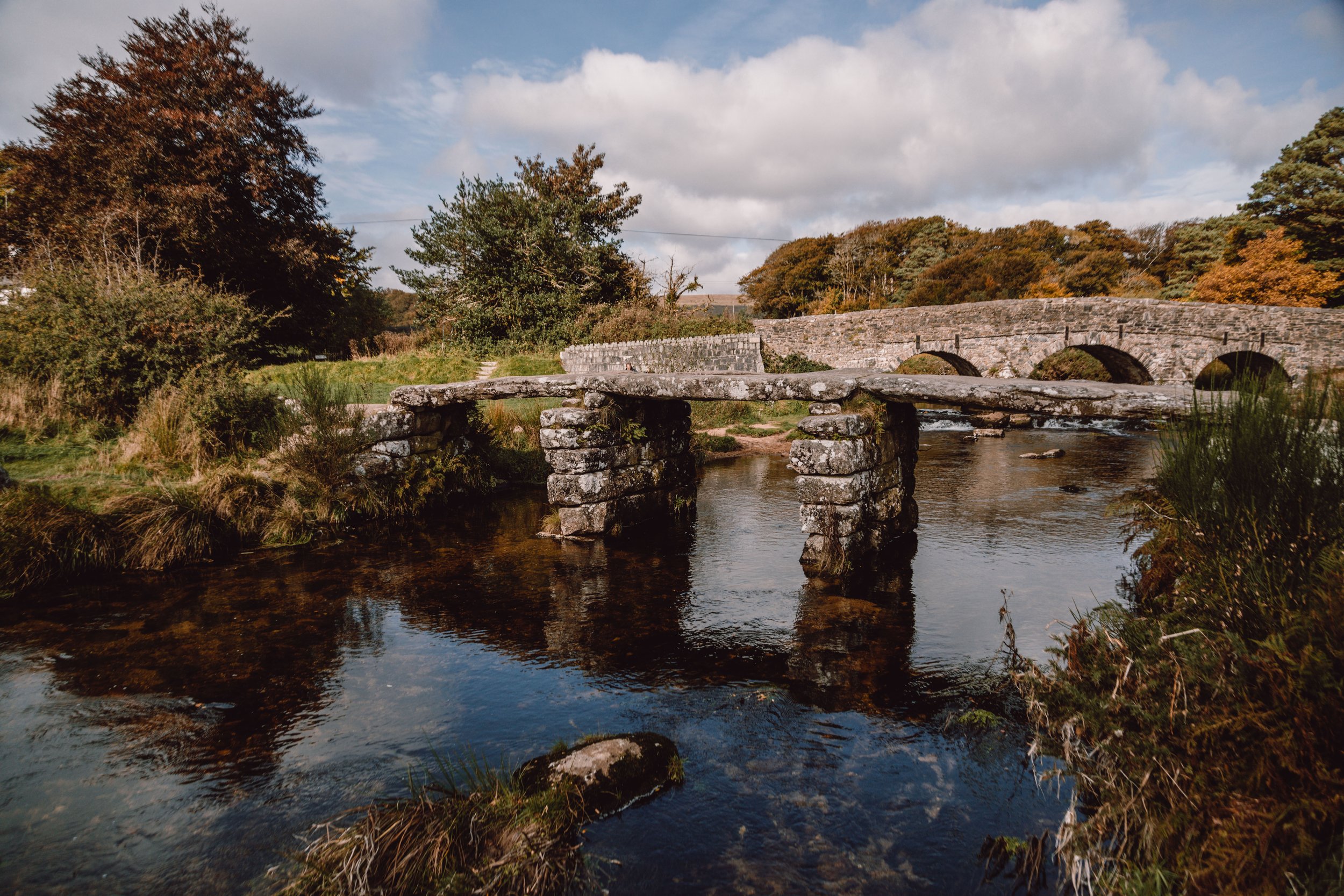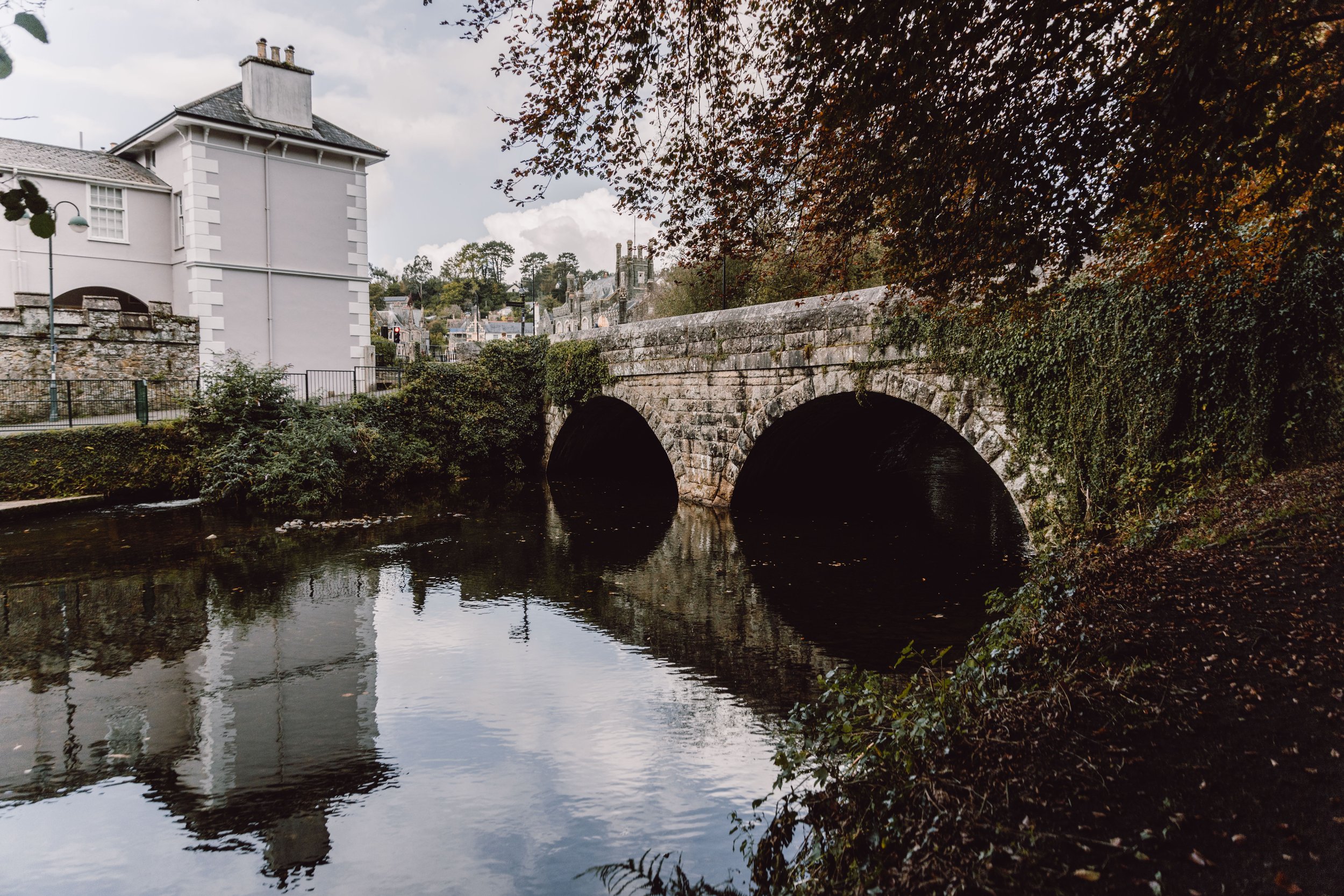This post may contain affiliate links, which means if you purchase through these links, we may receive a small commission at no cost to you. Thank you for supporting our website.
Where is Dartmoor National Park?
In the South West of England, Dartmoor National Park is located between Exeter and Plymouth in the South of Devon. Dartmoor was designated as a National Park in 1951 and covers a total area of 954 km². There are quaint villages in the park including Widecombe-on-the-moor, Bovey Tracey, Tavistock and Princetown where you will find Dartmoor Prison which was used during the Napoleonic Wars.
Dartmoor is a granite dominated landscape, covered in heather, peat and bogs and is a result of the historic clearing of land for livestock grazing. Tors are exposed from the moorland and are iconic to the landscape where there are over 160 in total. Dartmoor is a wild and rugged environment where ponies, Bronze Age settlements and ancient woodlands are found.
Read more about the national parks in the UK, for more inspiration of your next adventure!
What is Dartmoor National Park known for?
Home to one of the largest number of Bronze Age artefacts, you are transported to how historic settlers lived on the land in Dartmoor with evidence surviving thousands of years later. These artefacts were well preserved, thanks to the peat which provides an acidic environment and a deficiency of oxygen, creating a pH similar to vinegar.
Dartmoor is a magical and mysterious land full of myth and legend from fairies to the blood red eyed hounds. These tales are set in the magical backdrop of Dartmoor, from rolling clouds of mist to rugged tors. The trees that once covered the landscape were felled for farming, this has revealed the infamous tors that have been shaped by the untamed wild winds.
Dartmoor is one of the last areas of wilderness in the UK where you can wild camp and experience sleeping out under the stars amongst the local wildlife. There are allocated areas where you can set up your tent for the night. Although most of the land is privately owned, the Dartmoor Commons Act has designated most of it as Access Land allowing the public access to the land with no restrictions to where you can roam. There are some military areas which restrict access when the land is being used for firing practice.
The dramatic landscape has inspired writers, photographers, directors and painters. This includes Arthur Conan Doyle’s Sherlock Holmes novel ‘Hound of the Baskervilles’ which paints the perfect moody and mysterious setting for this story. A truly inspirational place that has inspired many creatives for centuries and continues to spark creativity today.
How to get TO Dartmoor National Park?
Even though the park may be one of the most remote and wild locations, there are good transport links to get to and get around Dartmoor. If you plan to arrive by train the closest stations are Exeter, Newton Abbot, Totnes, Ivybridge and Plymouth. A typical journey from London (Paddington) to Plymouth will take 4 hours. The Exeter/Okehampton Dartmoor Line will resume on the 20th November 2021 which provides access to the north of Dartmoor from Exeter.
If you will be arriving by car there are good access routes, if you are coming from the north and east of England you can access the park from the M5 and leaving at Junction 31 at Exeter. Best routes from London would be from A303, M4 or M3. If travelling from Cornwall the A30 will take you to North Dartmoor and A38 to South Dartmoor. We spent most of our time travelling up and down the Devon Expressway A38 dual carriageway which takes you towards Plymouth. The A30 will give you access to North Dartmoor.
How to get around Dartmoor National Park?
There are multiple roads that allow you drive through the park, however off these two main roads there are narrow lanes which are not suitable for wide vehicles. The B3357 and B3212 intersect in the middle of the park at Two Bridges providing direct access to the heart of Datmoor.
If you are driving a wider or longer vehicle than a standard sized car then you will need to avoid most of the narrow lanes, we avoided the road from Dartmeet to Ashburton and Dartmeet to Widecombe on the Moor. The West Devon Borough Council have provided a map to help you navigate which roads are suitable for your vehicle as many roads are difficult for coaches and buses including motorhomes.
There are a number of car parks throughout which provide great access to walking routes, most of which are free and some are pay & display. When parking, please ensure you do not block any farm gates or access points to keep roads clear for emergency vehicles and farm vehicles.
The Dartmoor National Park Authority are encouraging less traffic through the park by providing a regular bus service that allows you to hop on and off where you’d like throughout the park called the Dartmoor Explorer that goes from Plymouth to Exeter and back. The bus stops at Two Bridges, Postbridge, Princetown, Tavistock and more. An adult tickets costs £10 and £5 for kids and lasts for the day. Every Saturday the Haytor Hopper operates from 29th May until 30th October which runs from Newton Abbot or Bovey Tracey. This service provides direct access to Haytor Rocks and Widecombe-in-the-Moor. Adult tickets from £3-5.50 and child tickets from £2-3.70 and dogs travel free.
Cycling is a popular mode of transport around the park with 300km of byways and bridleways and you can find more information on where to cycle by looking at the Dartmoor and Surrounding Areas for Cyclists map. Two popular routes include the Dartmoor Way Cycle Route and the Granite Way.
Campervans and Motorhomes In DARTMOOR
Unfortunately, sleeping in your vehicle overnight is not permitted within Dartmoor National Park. This is included within the National Park Byelaws which includes no overnight sleeping in lay-bys, roadside or in car parks. You will find ‘no overnight camping’ signs in most of the main car parks but in smaller car parks they may not be visible but the Byelaws still apply. However, wild camping is allowed and this is specifically defined as sleeping in a tent and not a vehicle such as a campervan or motorhome.
There were no designated sites within the park apart from campsites most of which we found were closed during the time we visited which was during off peak season in October. We were able to find some campsites open year round close to the park. We stayed Ashbourne Woods campsite which provided great access to East Dartmoor national park with great facilities including hot showers, toilets, laundry and washing area. We planned our routes carefully, after our first day we plugged in where we wanted to go and were taken to a lane that was too narrow for us to go down! The council have produced a useful map which shows areas to avoid if you have a larger vehicle such as a large campervan or motorhome. We avoided all routes from Dartmeet to Ashburton and Dartmeet to Widecombe on the Moor.
What are the best things to see and do in Dartmoor National Park?
Leather Tor
A fantastic spot to watch the sunset, Leather Tor towers over Burrator reservoir and provides spectacular panoramic views across the Tamar estuary on a clear day. Towering above at 330m, this tor is easily accessible from a nearby car park and is located close to Sharpitor which you will pass first from the car park heading towards Burrator reservoir. Sharpitor is a much easier climb than it’s steeper neighbour, Leather Tor. The walk to Sharpitor is up a gentle hill, however the scattered granite rocks can make the walk a little more challenging finding a suitable route. We walked around the right hand side of Sharpitor and approached Leather tor. We then scrambled up Leather Tor and it was worth the effort of the climb as we were rewarded with incredible views overlooking extensive woodland and the scenic reservoir.
Where to park: There are a couple of free car parks off the B3212 which can become popular at weekends.
Burrator Reservoir
There is a lovely, easy to access circular walk around Burrator Reservoir which takes you through woodland, along streams and delivers spectacular views. A car park is found close to the reservoir, however we walked from the car park close to Sharpitor and Leather Tor. This was one of our favourite walks in Dartmoor and also was one of the longest walks, approximately 12km in total.
We parked in a small car park off the B3212, close to Sharpitor before hiking on the moorland to Devonport Leat. We followed the Leat through the beautiful woodlands and moorlands, passing Dartmoor ponies and other hikers before reaching Burrator reservoir and crossing the first of two dams. The first dam was the larger of the two, offering a steep drop on one side and magnificent views across the Burrator reservoir. The walk leads you around the other side of the reservoir and across the smaller second dam where there are multiple spots to have a break or a picnic at the waters edge.
Continue along the circular path, where it leads you past tall pine trees lining the road and you will reach a small peninsula with the ruins of Longstone Manor. The small detour around the perimeter is worth it to see the remains of what would have been a magnificent building with fantastic views. The final stretch of the hike will take you past several small bridges of different sizes and materials, from beautiful stone arch bridges to a functional metal-plated river crossing. You will retrace your steps past Sharpitor before reaching the car park.
Where to park: Burrator quarry car park is a popular spot to park and can become very busy at weekend. We parked at the free car parks off the B3212 which can become popular at weekends.
Brent Tor
Panoramic views of the Devon countryside, Brent Tor is a magical scene where you feel like you’ve walked onto a film set. We would recommend watching the sunset at this location or visiting at sunrise. St Michaels de Rupe church is perched ontop of Brent Tor, a basaltic volcanic outcrop of rock which dates back thousands of years ago. As you make your way to the top of the church, you will walk in the footsteps of many brides and grooms who have been wed here at this romantic location. At a height of 330m, the height of Brent Tor is magnified due to its isolation from other hills in the area and is surrounded by rolling green pasture. The Tor is unique in comparison to others within Dartmoor, as it is not granite and is mostly basaltic lava. The church holds a service every Sunday at 6pm and is believed to be the highest working church in England.
Where to park: You will find a car park opposite the Tor with toilet facilities and is free to park.
Dartmeet
As the name suggests, Dartmeet is where the two rivers East Dart and West Dart meet. There is a beautiful road bridge that was built in 1792 which cross over the river and leads you into the car park. The remains of a clapper bridge can be found next to the road bridge and if you follow the river downstream you will discover the confluence of the two rivers. Cross the road from the car park and past the bridge and follow the footpath, you will enter Dartmoor Nature Reserve, renowned for a variety of biodiversity and species who call this idyllic spot home. We spotted an iconic red mushroom with white spots, the typical mushroom you would imagine to see in fairytales and is poisonous, so we admired it from a distance! The river widens alongside rocky and grassy verges with sandy coves perfect for a picnic or a brave swim. Please never swim alone, always have someone with you for your safety as the water was very cold especially in October when we could brave only a couple of seconds immersed in the icy waters.
Where to park: Dartmeet pay and display car park costs £2 for all day. This car park is a good size, however on weekends and during peak times this can quickly fill. There are tea rooms located at the end of the car park and also toilets.
Bellever Forest
The landscape in Dartmoor has small pockets of woodland which remain as a reminder of it’s past and how the landscape would have been before the clearing of the land for farming. Bellever is a forest plantation managed by Forestry England which produces sustainable timber, at certain times of the year areas of the forest may be closed for maintenance. The forest is full of fragrant pine trees and the East Dart river cuts through it, creating an idyllic setting for a picnic or to cool down on a warm summers day. There are plenty of walks through the forest which allow you experience the history of Dartmoor including stone circles, cairns and cists. You can also hike up to Bellever Tor and walk around Postbridge to see one of the best examples of a clapper bridge.
Where to park: There are two free forestry commission car parks, the first car park is located just as you turn off the A338 which has several walks you can take from there. The second car park is found within the forest which has toilets facilities.
Postbridge
Postbridge is the ideal place to explore Dartmoor’s ancient past. There are a number of trails to help you enjoy the area. As you walk through this stunning landscape Bronze Age artefacts are to be found all around you. Stone cists, burial cairns, stone rows and hut circles are evidence of how people lived on the high moor thousands of years ago. When exploring the moor please be sure to wear appropiate footwear and clothing. The bridge which you can walk over the river is one of the best preserved examples of a clapper bridge. The Postbridge visitor centre is worth a visit, it shows the history and explains the various historical remnants among the landscape you will discover along the walks. We took the History Hunters trail which takes you through Bellever Forest and get close to Dartmoor’s past. Along this easy route you will find archaeological evidence of the past such as stone rows, hut circles, burial cairns and cists. Visit Postbridge Visitor Centre and explore to discover more of its secrets.
Where to park: We would recommend parking in the forestry commission car park located opposite the Postbridge Visitor Centre as it’s free.
Witsmans Wood
Witsmans Wood is an enchanted 9 acre woodland and is one of the highest upland oak woodland in Britain. The ancient woodland is perched on the sloped valley of the West Dart River and is thought to be the remnants of a forest dating back thousands of years. The small copse, used to be part of a much bigger landscape of trees and those remaining ancient oak trees are estimated to be 500 years old. In 1964, due to it’s bio diverse significance the woodland was given protection as a Site of Special Scientific Interest (SSSI). The tree branches and woodland stone covered floor are home to a number of different mosses and lichens. The low hanging branches and stone covered floor protect it from the destructive grazing of ponies and cattle that roam the moors. In 2021, Natural England urged visitors to admire the woods from a distance instead of entering the woods. When we visited there were no signs of this at the site and only after we’d visited we were made aware of this. It’s important to preserve this special place and to not damage the delicate flora and fauna within the woodland. Do not touch or remove anything from the woodland and leave no trace. The area is high risk for fires, do not light any fires in the area.
Where to park: There is a car park opposite the Two Bridges Hotel which is free but fairly small, there are a few lay-bys on the road you could park on but we would recommend either visiting off peak season or getting there early. The walk is relatively easy to the woods will take you around 30-45 minutes, you can create a circular walk by carrying onto Longaford Tors, Littarford Tors and finally Crockern Tor.
TAVISTOCK
Tavistock is a beautiful market town located to the south west of Dartmoor national park and is a great location for access to the western side of Dartmoor. Pork Hill is nearby which is a popular spot for dog walkers and a great spot to watch the sunset. Tavistock is a world heritage site and is an ancient stannary town which is where counties in Devon would manage the collection of tin coinage. The River Tavy winds through Tavistock and a canal was constructed in the 19th century where cargo could be loaded onto ships. The town is well known for it’s award-winning farmers’ market full of local produce, antiques and handmade crafts.
Where to park: Bedford car park is close to the town centre however does not allow motorhomes to park here. If you are travelling in a motorohome or campervan we would recommend parking at the Riverside car park off Pixon Lane which is over the river from Bedford car park and a short 5 minute scenic walk into the town centre.
















































